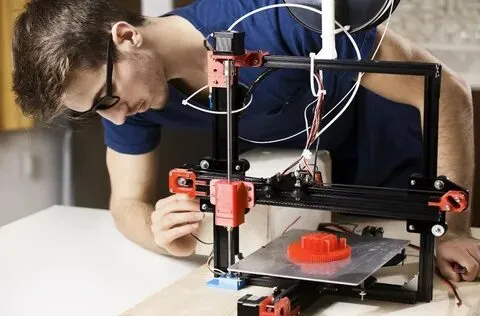If you’re using a 3D printer, knowing the top three dangers when using a 3D printer can save you from serious harm. From toxic fumes to fire risks and moving parts, these hazards are real—and often ignored by beginners.
This guide will help you understand these risks clearly, so you can take the right steps to protect yourself, your home, and those around you while enjoying safe 3D printing.
What Makes 3D Printing Dangerous?
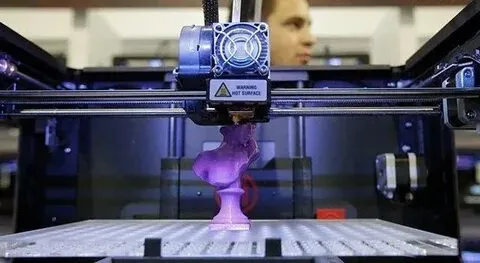
3D printing becomes dangerous when people create weapons, use unsafe materials, or ignore fire and chemical risks. Poor ventilation, toxic fumes, or weak printed parts can cause harm, especially at home or in schools.
Understanding the Technology Behind the Risk
3D printers melt plastic at high heat, releasing fumes and particles. Without proper education, users may overlook how serious these invisible dangers can be.
Also read must: What Is The Size Of Regular Printer Paper-Find Size!
Why Hobbyists Often Ignore Safety
Many hobbyists focus on results, not risks. They skip safety steps, don’t ventilate properly, or use unsafe filaments, leading to long-term health and fire dangers.
Hidden Dangers in Everyday Printing
Even simple prints can release harmful VOCs, overheat the machine, or damage lungs. Just because it looks safe doesn’t mean it is—precautions are always needed.
Which Filaments Release the Most Harmful Emissions?
ABS and nylon filaments release the most harmful emissions, including toxic fumes and ultrafine particles. These can affect the lungs and indoor air quality. Always print in a well-ventilated space or use an enclosure with proper filtration.
Differences Between PLA, ABS, PETG, and Nylon
PLA is safer with low fumes. ABS and Nylon release strong odors and VOCs. PETG is balanced—tough, less toxic, but still needs airflow.
Which Materials Need Better Ventilation
ABS, Nylon, and resin materials need strong ventilation. They release harmful fumes that can irritate lungs and affect indoor air quality if ignored.
Safer Filament Options for Home Users
PLA is best for home use—low odor, fewer toxins, and beginner-friendly. PETG is a good second choice if you still ensure proper airflow.
What VOCs and Ultrafine Particles Do to Your Lungs
VOCs and ultrafine particles from 3D printing can enter deep into your lungs, causing irritation, breathing issues, or long-term damage. They may trigger asthma, reduce lung function, and increase the risk of chronic respiratory diseases over time.
Short-Term vs. Long-Term Exposure Effects
Short-term exposure may cause headaches, coughing, or eye irritation. Long-term exposure can damage lungs, worsen asthma, and increase the risk of chronic breathing problems.
Groups Most at Risk (Kids, Asthmatics, etc.)
Children, asthmatics, and elderly individuals are more susceptible to the effects of 3D printing fumes. Even small exposure can trigger breathing issues or worsen existing health conditions.
How to Reduce Exposure to 3D Printing Fumes
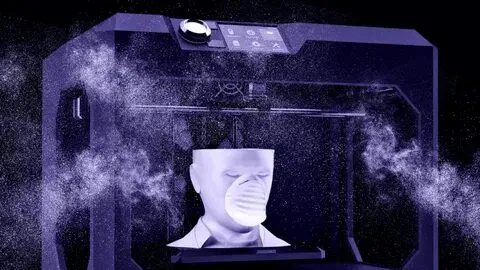
Use a well-ventilated room, install a fume extractor or HEPA filter, and prefer low-emission filaments like PLA. Keep the printer in an enclosed box with proper airflow to block harmful fumes and protect your lungs.
Best Ventilation Methods for Your Workspace
Use exhaust fans, open windows, or ducted enclosures to remove fumes. Always direct airflow outside, not back into the room where you work.
Air Purifiers That Work for 3D Printers
HEPA filters with activated carbon work best. They trap ultrafine particles and VOCs, helping keep indoor air cleaner and safer during long print sessions.
Enclosed Printers vs. Open Frame: Which Is Safer?
Enclosed printers are safer. They contain fumes, reduce burn risk, and allow better control with filters—ideal for indoor or shared workspaces.
Fire Hazards in 3D Printing: What Causes Them
Fire hazards in 3D printing are usually caused by overheating parts, faulty wiring, poor-quality printers, or leaving machines unattended. A damaged thermistor or stuck nozzle can also trigger a fire if safety features fail or are missing.
Signs Your 3D Printer Could Catch Fire
Burning smell, overheating parts, exposed wires, flickering lights, or erratic temperature readings are warning signs. If the printer stops responding, heats uncontrollably, or the hotend stays on too long, shut it down immediately to prevent a fire.
Also read must: How TO Print Out Text Messages-Start Printing Texts!
Health and safety risks from using 3D printers
3D printers can release toxic fumes, overheat, or cause burns if touched during printing. Breathing VOCs and particles may harm the lungs over time. Poor handling, loose wiring, or fire risks also make safety precautions extremely important.
How to Safely Use a 3D Printer?
Place the printer in a well-ventilated area, use low-emission filaments, and never leave it running alone. Wear safety gear if needed, check for damaged wires, and keep flammable items away to avoid health issues and fire risks.
Usage of Corrosive Baths
Corrosive baths are used to dissolve support material from 3D prints, especially in industrial setups. Always wear gloves, goggles, and use proper ventilation. Spills or skin contact can cause burns, and fumes may harm lungs if inhaled.
Waste Disposal when 3D Printing
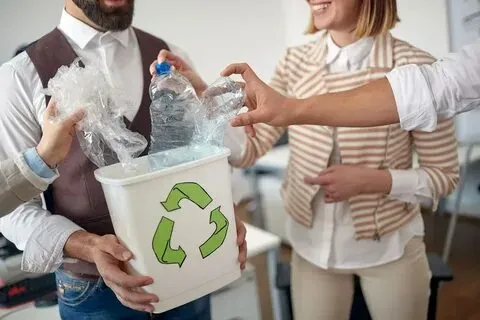
Dispose of failed prints, supports, and filament scraps properly—don’t throw them in regular trash. Separate hazardous materials like resin waste or chemical baths. Use recycling programs if available, and always follow local waste disposal and safety rules.
What Regulations and Standards Govern 3D Printing Safety?
3D printing safety is guided by standards like ISO/ASTM 52900, OSHA workplace rules, and UL certifications. These cover fire safety, ventilation, chemical handling, and equipment testing—ensuring users, workplaces, and environments stay protected during printing operations.
What Are Safety Concerns and Potential Hazards of 3D Printing?
3D printing can release toxic fumes, overheat, or catch fire. Burns, electric shocks, and poor ventilation also pose serious risks. Improper handling of resins or chemicals may harm skin, eyes, or lungs without proper safety measures in place.
What Are Common 3D Printing Safety Measures?
Use proper ventilation, fire-resistant enclosures, and certified equipment. Wear gloves or goggles when handling resin or hot parts. Keep printers away from flammable items, check wiring regularly, and never leave machines running unattended for long periods.
Harmful Effects of 3D Printing
3D printing can release toxic fumes and ultrafine particles that damage lungs over time. It also poses fire risks, skin burns, and electrical hazards. Long-term exposure without safety steps can lead to serious health and environmental issues.
3D Printing Safety with VOC, ABS and PLA Fumes
ABS gives off strong VOCs and harmful fumes, while PLA is safer but still releases particles. Always print in a ventilated space, use air filters or enclosures, and avoid inhaling fumes to protect your health during printing.
Get Your Free OSHA Quick Start Guide
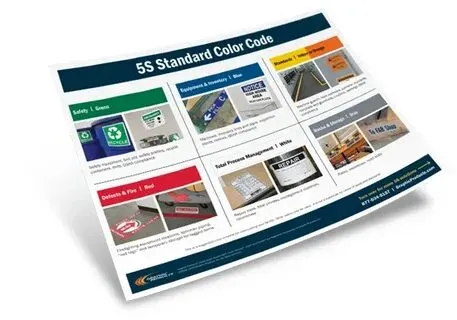
Download the free OSHA Quick Start Guide to understand key safety steps for 3D printing. It covers ventilation, fire risks, chemical handling, PPE use, and machine checks—helping you stay compliant, safe, and informed in any workspace.
Faqs
Is it okay to sleep in the same room as a 3D printer?
No, it’s not safe to sleep in the same room as a 3D printer due to harmful fumes and fire risks during printing.
What are 3 disadvantages of 3D printing?
Three disadvantages of 3D printing are toxic emissions, fire hazards, and limited material strength.
Do 3D printers use a lot of electricity? 1.5 line unique answer
3D printers don’t use extreme electricity, but long print times can lead to noticeable energy use, especially with high-temperature filaments or heated beds.
How does 3D printing affect the medical field?
3D printing transforms the medical field by enabling custom implants, prosthetics, and even organ models, improving patient care and reducing surgical risks.
What is the biggest problem with 3D printing?
The biggest problem with 3D printing is the release of ultrafine particles and toxic VOCs, which pose serious long-term health risks if not properly ventilated.
conclusion
3D printing is a powerful tool, but it comes with real safety risks like toxic fumes, fire hazards, and health problems. By using safe materials, proper ventilation, and following clear safety rules, you can avoid danger. Always stay alert, check your equipment, and follow trusted guidelines. Safe printing protects your health, your workspace, and everyone around you.
Also read must: How To Clean 3d Printer Nozzle- Start Cleaning Today!
